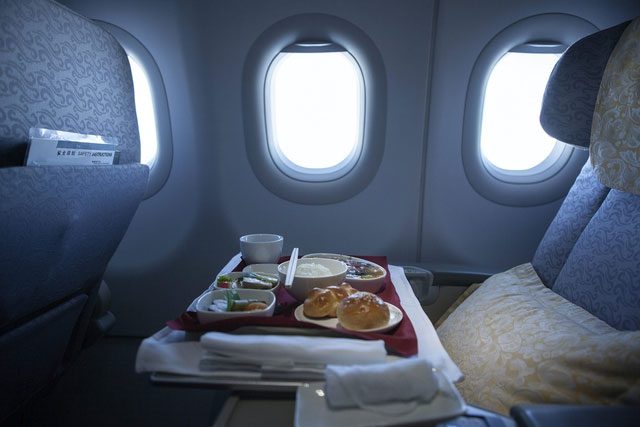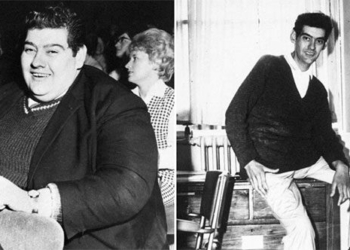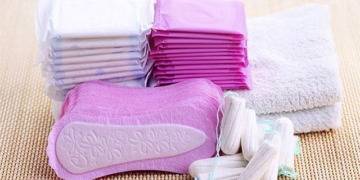Passengers never see flight attendants and pilots resting or eating. So what do they eat, and is it similar to the food we usually consume?
How Does the Crew Eat on Flights?
Typically, a standard meal for the crew is quite similar to that of economy class passengers. However, the crew will have three or four options, including vegetarian meals.
Some airlines are more generous, providing higher quality meals for the crew. For instance, on long-haul flights, both pilots and flight attendants are offered business-class meals.
However, they will only choose their meals after all passengers have finished eating. “We cannot accurately predict what each passenger will order on any given flight, so once our passengers have finished, the crew will have the remaining main meal options,” said Ben Inall, head of crew development at Virgin Australia and an experienced flight attendant.

Many flight attendants and some pilots bring their own food on board. (Illustrative image)
Additionally, passengers may occasionally not receive their special meals, or it may be too late to order one. In this case, airlines will provide a backup meal for the crew if appropriate, especially in the case of vegetarian meals. This could be a salad from business class, bread and cheese from economy class, along with some fruit from first class.
On a flight without a fixed meal time, no one is allowed to eat until in-flight service is complete. Generally, the crew will eat as quickly as possible. To ensure privacy, the galley curtain is usually drawn. Even after service is completed, the crew must still respond to call bells and perform their duties.
A secret shared by many seasoned flight attendants is that they prefer to prepare their own meals at home rather than eat airline food.
According to them, in-flight meals are considered unhealthy due to the higher amounts of salt and fat aimed at making the food more “palatable.” Therefore, Tim Hibbetts, a pilot, noted that many flight attendants and some pilots bring their own food on board.
Shreyas Parikh, a flight attendant, shared: “I don’t like eating airplane food because it has too much oil and salt; it’s not really healthy to eat every day. My wife is also a flight attendant and hasn’t eaten airline food for over 15 years.”
In agreement, Suzanne Strong from Air Canada also mentioned that she often brings her meals from home. “Although we are served various wonderful foods on board, especially on international flights, I still try to bring my own portion. I want to ensure that I have a healthy meal that suits my taste,” she said.
According to a flight attendant named Whytney, who has worked for a major U.S. airline for seven years: “Typically, people bring a large insulated lunchbox with everything in it: meats, yogurt, salads, fruits, and many other things,” Whytney said, asking to keep her surname private for personal reasons.
The crew also tends to be quite creative when it comes to dining on the plane. Sometimes, with just a slice of sandwich bread, they can transform it into a delightful late-night snack on long-haul flights using sauces. They can also turn it into a salad with macadamia nuts from first class and a small bottle of vinegar to create a more luxurious meal, healthier than the crew meals provided by the airline.

The crew also tends to be quite creative when it comes to dining on the plane. (Illustrative image).
4 Foods Flight Attendants Avoid Eating on Planes
HuffPost spoke with three flight attendants about the in-flight meals they would never eat mid-flight, as well as the dishes they actually recommend.
Appetizers (Pasta and Soup)
“Pasta and soups often contain a high amount of salt; some Indian-style meals can also be salty even without meat. Sandwiches with processed meats can also be saltier than usual,” Whytney said.
A study from Germany showed that the pressure on airplanes causes passengers to perceive some types of food as less flavorful. To make these meals more palatable, companies often add more salt than usual.
According to nutritionist Vanessa Rissetto from the U.S., the pressure changes can lead to dehydration for some passengers throughout the flight; high-sodium meals can exacerbate headaches related to dehydration, constipation, or fatigue. To combat this, she recommends using some electrolyte tablets or coconut water to rehydrate, and eating vegetables, fruits, or protein-rich foods to feel more energized.
Jasmine King, an eight-year veteran flight attendant since 2015, advises avoiding salty snacks like nuts and pretzels to prevent further dehydration.
Cheese Platter
If you order a cheese platter on a plane hoping to enjoy a delightful treat, you may end up disappointed.
“Stay away from cheese platters as they are often not fresh,” Jasmine advises, adding that she sometimes craves this dish but doesn’t really encourage people to eat it while flying.

The pressure changes can lead to dehydration for some passengers throughout the flight. (Illustrative image).
Steak and Fillet
Many flight attendants “avoid” eating these two dishes while on duty because, based on their experience, steak and fillet are often not cooked properly. “The ovens are too large, and a lot of food can be crammed in there. If you are particularly concerned about how food is prepared, you should not eat these two dishes on a plane,” said an employee from Delta Air Lines.
Experts indicate that dishes like steak and fillet should be reheated properly to eliminate the risk of food poisoning.
Alcohol
As mentioned earlier, the pressure changes on an airplane can lead to dehydration for many passengers, and alcohol exacerbates this situation. “Alcohol negatively affects the body at high altitudes,” Whytney said. Alcohol also leads to oxygen deficiency, which is related to low oxygen levels in body tissues.
Dr. Clare Morrison, a medical expert from MedExpress, stated: “The air pressure in airplanes is lower than normal, so the body has a harder time absorbing oxygen, which can lead to dizziness. Therefore, when on an airplane, people can become more intoxicated than they would on the ground, with the same amount of alcohol.”





















































